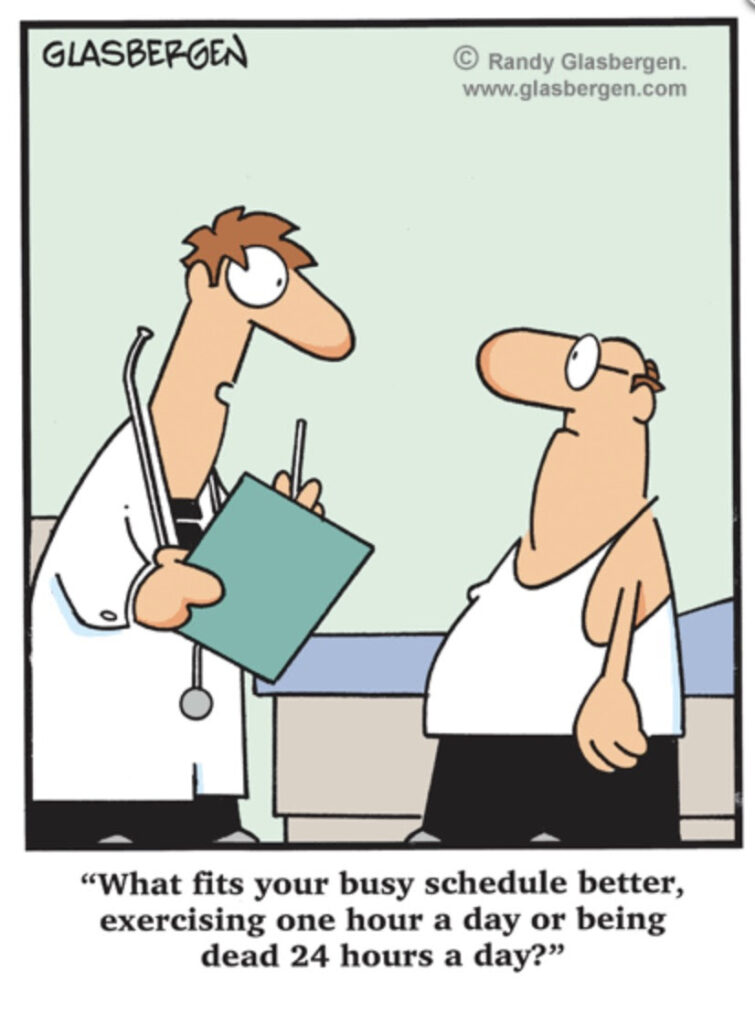Question: I’m on a diet and need some help getting through the Thanksgiving holiday.
Answer: Thanksgiving is a time for friends and family to get together and express their gratitude for one another. But for some who are watching their weight, it can be a cause of dread. Here are some mindful eating tips to ensure you enjoy your Thanksgiving.
- Eat A Healthy Breakfast: It’s a good idea to begin your holiday with a healthy breakfast so you’re not starving by the time dinner is served.
- Don’t Skip Your Workout: It can be tempting to take a day off from your workout routine on a holiday but working out helps to create a calorie deficit. Taking a walk with the family after dinner is another great way to help burn off some of those calories and it still feels social.
- Offer To Bring A Dish: Offering to bring a dish not only is a polite move for whomever is hosting your Thanksgiving dinner, it also helps give you control over what you’re eating.
- Control Your Portions: Portion control is key to sticking to your diet goals during Thanksgiving. We recommend skipping any foods that you can have all year long and taking smaller portions of your holiday favorites.
- Don’t Beat Yourself Up: The holidays are meant to be enjoyed. Every day is a new day and you can start over on your diet on Friday. Enjoy yourself and spending time with your loved ones.
Got a Question? Send it to drw@weiszconciergemedical.com and, if it is of general interest, Dr. Weisz will provide an answer in an upcoming issue of the Concierge Connection.
Source: AARP.org, April 15, 2022
=================================================================================

Good News for Weekend Warriors
Can’t find time to exercise during the workweek? Scientists have good news for you.
Evidence is piling up that condensing your exercise into just one or two days a week — being a “weekend warrior” — is enough to reap the many benefits of physical activity.
The latest such study, shows a weekend warrior routine can ward off a long list of serious illnesses. The exercise pattern was linked with a lower risk of 264 diseases and appeared to be just as effective at reducing risk as more frequent exercise spread throughout the week. Most of the diseases studied affected the heart and blood vessels — atherosclerosis, heart attack, heart failure, diabetes, stroke — but researchers found that the benefit extended to a surprising range of conditions.
“It was encouraging to see strong associations with chronic kidney disease,” said Shaan Khurshid, MD, lead author of the study conducted at Massachusetts General Hospital. “We also saw the association with sleep apnea, and even things like gallstones and heartburn. These all make sense but had not been previously shown to this level of detail.”
The “Weekend Warrior” concept is drawing more scientific attention as the subject of a mounting body of impressive research that promises greater flexibility in how you choose to achieve your workouts.
What the Research Shows
In the new study, researchers analyzed the data of 89,573 people from the UK Biobank, a group of relatively healthy middle-aged to older adults in the U.K. Participants wore accelerometers on their wrists that recorded their physical activity for one week.
The scientists looked at the data and classified people into three groups: regular exercisers who worked out several times a week; weekend warriors, who got at least half of their exercise in one or two days; and inactive people, those who got less than the U.S.-recommended 150 minutes of moderate activity a week. Compared to the inactive people, both the regular exercisers and weekend warriors had much lower risks of disease.
Technically, the regular exercisers had slightly better results — for example, 28% lower risk of high blood pressure compared to 23% for the weekend warriors, and 46% less risk for diabetes compared to 43%. But the differences weren’t big enough to be scientifically meaningful, leading the researchers to conclude that total exercise is what’s important for reducing disease risk, not how often you do it or how you split it up.
Why Scientists Are Suddenly So Into Weekend Warrior Workouts
“People are working and have lifestyles that make it harder to exercise during the week,” said Dr. Khurshid. “The incidence of cardiometabolic disease is increasing globally. We’re trying to find optimal recommendations that we think the largest population can potentially adhere to in order to reduce the public health burden.”
U.S. physical activity guidelines have previously recommended more regular exercise and specific exercise lengths. Research from doctors like Khurshid is showing that exercise prescriptions need not be that rigid. “We shouldn’t put constraints on patients, telling them they need to do exercise ‘this way,’” said Khurshid, “because it may discourage them from actually achieving the right volume, which is what’s most important.”
But There’s a “But”
Note that the weekend warriors in the study didn’t get all their activity in one to two days, just the bulk of it. And if you choose to get most of your exercise in such a small window, you’d better be willing to put the “warrior” into weekend warrior, working out for longer than you would in a typical exercise session.
=================================================================================
Source: Sean Tyson, WebMD, October 17, 2024.
=================================================================================

Improving Flu Vaccine Effectiveness
How can the impact of flu vaccines be improved in older adults? One method is the addition of an adjuvant. An adjuvant is a substance that increases the effectiveness of a drug or vaccine. For example, adjuvants are often added to vaccines to help the body produce a stronger immune response to the disease. Adjuvants have been used safely in vaccines for decades.
Another option is to increase the antigen dose in the vaccine, creating a high-dose (HD) flu vaccine. Antigens are substances that trigger the immune system to produce antibodies, which are proteins that fight off antigens. Antigens can be found in the environment and include bacteria, viruses, chemicals, pollen, fungi, allergens, venom, and other toxins.
Why is there a need for an HD vaccine?
“The elderly population bears the greatest burden from the flu,” explained the head researcher in a new study. “This is due to three factors: An aging immune system, a higher number of comorbidities, and increased frailty.” A comorbidity is a disease that is simultaneously present with another or others in a patient.
Standard-dose flu vaccines are seen as offering less than optimal protection for those older than 65 years, which led to the development of a new vaccine with four times the antigen dose of standard flu vaccines. This HD vaccine was introduced in France during the 2021/2022 flu season. A real-world study has since been conducted to evaluate its effectiveness in the target population — those aged 65 years or older.
Results of the study
The study included 405,385 noninstitutionalized people aged 65 years or older matched with 1,621,540 individuals in a 1:4 ratio. The first group received the HD vaccine, while the second group received the standard-dose vaccine. Both the groups had an average age of 77 years, with 56% women, and 51% vaccinated in pharmacies. The majority had been previously vaccinated against flu (91%), and 97% had completed a full COVID-19 vaccination schedule. More than half had at least one chronic illness.
Hospitalization rates for flu — the study’s primary outcome — were 69.5 vs 90.5 per 100,000 person-years in the HD vs standard-dose group. This represented a 23.3% reduction.
Strengths and Limitations
Among the strengths of the study, the researchers highlighted the large number of vaccinated participants older than 65 years — more than 7 million. Additionally, the results were consistent with those of previous studies.
However, the study did not randomize participants and introduced potential bias. For example, the HD vaccine may have been prioritized for the oldest people or those with multiple comorbidities. Additionally, the 2021/2022 flu season was atypical, with the simultaneous circulation of the flu virus and SARS-CoV-2.
Conclusion and Disclosure
“The latest data from the 2022/23 season show a 27% reduction in hospitalizations with the HD vaccine in people over 65,” stated the head of the study.
The study was funded by Sanofi. Several authors are Sanofi employees. The researchers reported possible conflicts of interest with Sanofi, MSD, Pfizer, GSK, and Moderna.
==============================================================================
Source: Stephanie Lavaud, MD Edge, October. 22, 2024. Internal Medicine News.
==============================================================================

It’s Not Always Good to “See the Light”
This October, millions of Americans missed out on two of the most spectacular shows in the universe: the northern lights and a rare comet. Even if you were aware of them, light pollution made them difficult to see, unless you went to a dark area and let your eyes adjust.
It’s not getting any easier — the night sky over North America has been growing brighter by about 10% per year since 2011. More and more research is linking all that light pollution to a surprising range of health consequences: cancer, heart disease, diabetes, Alzheimer’s disease, and even low sperm quality, though the reasons for these troubling associations are not always clear.
Glaring headlights, illuminated buildings, blazing billboards, and streetlights fill our urban skies with a glow that even affects rural residents. Inside, since the invention of the lightbulb, we’ve kept our homes bright at night. Now, we’ve also added blue light-emitting devices — smartphones, television screens, tablets — which have been linked to sleep problems.
Bright Lights, Big Problems
For one 2024 study researchers used satellite data to measure light pollution at residential addresses of over 13,000 people. They found that those who lived in places with the brightest skies at night had a 31% higher risk of high blood pressure. Another study out of Hong Kong showed a 29% higher risk of death from coronary heart disease. And yet another found a 17%higher risk of cerebrovascular disease, such as strokes or brain aneurysms.
Research has found links between the nighttime glow outside and other diseases:
Breast cancer. “It’s a very strong correlation,” said Randy Nelson, PhD, a neuroscientist at West Virginia University. A study of over 100,000 teachers in California revealed that women living in areas with the most light pollution had a 12%higher risk.
Alzheimer’s disease. In a study published this fall, outdoor light at night was more strongly linked to the disease than even alcohol misuse or obesity.
Diabetes. In one recent study, people living in the most illuminated areas had a 28% higher risk of diabetes than those residing in much darker places.
What Happens in Your Body When You’re Exposed to Light at Night?
Research has revealed that light at night (indoors or out) disrupts circadian clocks, increases inflammation, affects cell division, and suppresses melatonin, the “hormone of darkness.” “Darkness is very important,” Hanifin said. When he and his colleagues decades ago started studying the effects of light on human physiology, “people thought we were borderline crazy,” he said.
Nighttime illumination affects the health and behavior of species as diverse as Siberian hamsters, zebra finches, mice, crickets, and mosquitoes. Like most creatures on Earth, humans have internal clocks that are synced to the 24-hour cycle of day and night. The master clock is in your hypothalamus, a diamond-shaped part of the brain, but every cell in your body has its own clock, too. “There are special photoreceptors in the eye that don’t deal with visual information. They just send light information,” the researchers said. “If you get light at the wrong time, you’re resetting the clocks.”
This internal clock “prepares the body for various recurrent challenges, such as eating,” said Christian Benedict, PhD, a sleep researcher at Uppsala University, Sweden. “Light exposure [at night] can mess up this very important system.” This could mean, for instance, that your insulin is released at the wrong time, Benedict said, causing “a jet lag-ish condition that will then impair the ability to handle blood sugar.”
When lab animals are exposed to nighttime light, they “show enormous neuroinflammation” — that is, inflammation of nervous tissue, Nelson said. In one experiment on humans, those who slept immersed in weak light had higher levels of C-reactive protein in their blood, a marker of inflammation.
When researchers put wrist-worn light sensors on over 80,000 British people, they found that the more light the device registered between half-past midnight and 6 a.m., the more its wearer was at risk of having diabetes several years down the road — no matter how long they’ve actually slept. This, according to the study’s authors, supports the findings of satellite data.
A similar study that used actigraphy with built-in light sensors, measuring whether people had been sleeping in complete darkness for at least five hours, found that light pollution upped the risk of heart disease by 74%. Actigraphy is a non-invasive technique that uses a wearable device to measure a person’s activity and rest cycles over time.
======================================================================
Source: Marta Zaraska, CHEST Physician, October 24, 2024
======================================================================

Can Semaglutides Help Prevent Alzheimer’s Disease?
A new study provides real-world evidence to support the potential repurposing of semaglutides like Ozempic and Wegovy—currently being used to treat type 2 diabetes and obesity— in the prevention of Alzheimer’s disease. Adults with type 2 diabetes who were prescribed semaglutide had a significantly lower risk for Alzheimer’s disease compared with their peers who were prescribed any of seven other antidiabetic medications.
“These findings support further clinical trials to assess semaglutide’s potential in delaying or preventing Alzheimer’s disease,” wrote the investigators with Case Western Reserve School of Medicine, Cleveland, Ohio.
Real-World Data
Semaglutide has shown neuroprotective effects in animal models of certain degenerative diseases, including Alzheimer’s and Parkinson’s. In animal models of Alzheimer’s, the drug improved spatial learning and memory, as well as glucose metabolism in the brain.
In a real-world analysis, the researchers used electronic health record data to identify 17,104 new users of semaglutide and 1,077,657 new users of seven other antidiabetic medications.
Over 3 years, treatment with semaglutide was associated with significantly reduced risk of developing Alzheimer’s disease, most strongly compared with insulin.
Compared with the other medications, semaglutide was associated with a 40%-70% reduced risk for first-time diagnosis of Alzheimer’s disease in patients with type 2 diabetes. The findings align with recent evidence suggesting semaglutides may protect cognitive function.
In the clinical trial, adults with early-stage Alzheimer’s disease taking the liraglutide exhibited slower decline in memory and thinking and experienced less brain atrophy over 12 months compared with those taking a placebo.
Promising, but Preliminary
Diabetes is a known risk factor for Alzheimer’s and managing diabetes with drugs such as semaglutide “could benefit brain health simply by managing diabetes,” according to the researchers.
“However, we still need large clinical trials in representative populations to determine if semaglutide specifically lowers the risk of Alzheimer’s, so it is too early to recommend it for prevention,” said the head of the research team.
She noted that some research suggests that semaglutides “may help reduce inflammation and positively impact brain energy use. However, more research is needed to fully understand how these processes might contribute to preventing cognitive decline or Alzheimer’s.”
The study was supported by grants from the National Institute on Aging and the National Center for Advancing Translational Sciences.
===============================================================================
Source: Megan Brooks, MD Edge / Neurology, October 25, 2024.
===============================================================================
A Dose of Healthy Humor



===============================================================================
Heart Healthy Thanksgiving Salad

This easy pickled apple vinaigrette delight is bright and fresh!
The perfect way to brighten up a hearty, rich feast is with a Thanksgiving salad. Not only is it easy to put together, it is also anything but boring!

Ingredients
For the pickled apples:
- 3/4 c. apple cider vinegar
- 2 Tbsp. honey
- 2 Tbsp. whole grain mustard
- 1 shallot, minced
- 1 tsp. minced thyme
- 1/2 tsp. kosher salt
- 1 large honeycrisp or gala apple, sliced
- For the vinaigrette:
- 1/2 c. pickled apple brine
- 2/3 c. olive oil
- 1/4 tsp. ground black pepper
- For the salad:
- 1 small head curly green lettuce, cut into bite-sized pieces (about 7 cups)
- 1/2 small head radicchio, cut into bite-sized pieces (about 2 cups)
- 1/2 fennel bulb, thinly shaved
- 1/2 c. chopped smoked almonds
- 1/2 c. crumbled blue cheese
- 2 Tbsp. chopped fennel fronds
Preparation
Step 1
For the pickled apples: In a medium, microwave-safe bowl, combine the vinegar, honey, mustard, shallot, thyme, and salt. Microwave until very hot, about 45 seconds. Stir in the apples. Let stand for 15 minutes. Remove the apples; reserving the pickling liquid. Set aside.
Step 2
For the vinaigrette: Combine the pickling liquid, olive oil, and black pepper in a mason jar. Shake vigorously until combined.
Step 3
For the salad: Add the lettuce, radicchio, and fennel to a large bowl and toss to combine. Add the pickled apples, almonds, and blue cheese. Drizzle with half the vinaigrette and toss to combine. Top with the fennel fronds.
Step 4
Serve chilled, with extra vinaigrette.
===========================================================================================
Source: https://www.thepioneerwoman.com/food-cooking/recipes/a44841917/thanksgiving-salad-recipe/

